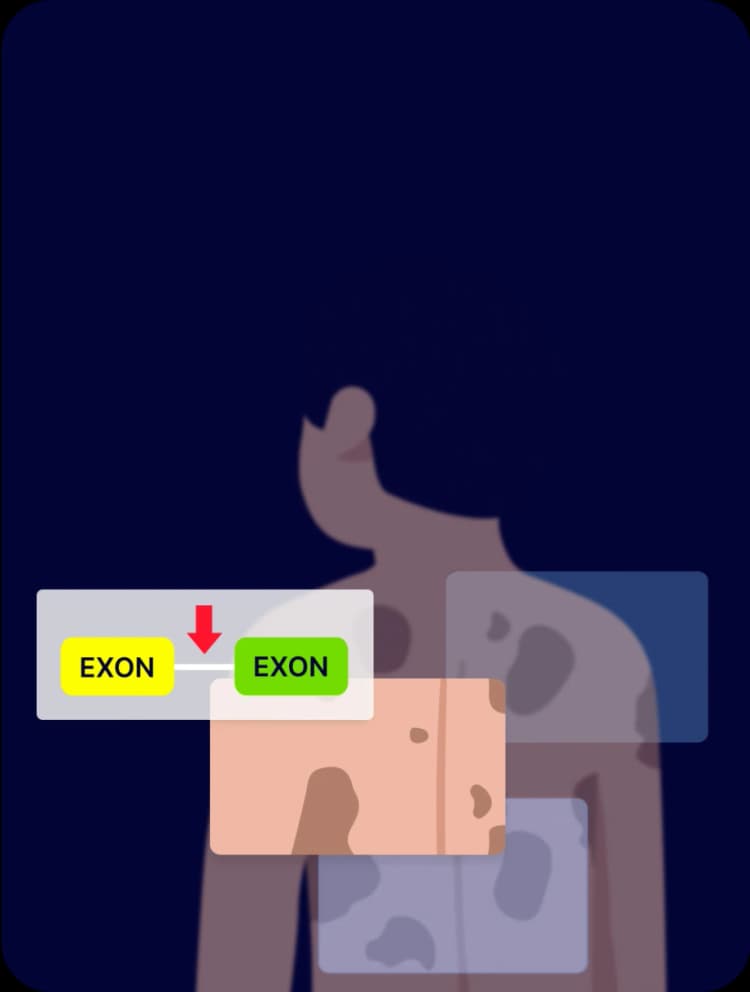Case of Cardio-facio-cutaneous syndrome: The Critical Role of Genetic Testing
- Diagnostic story | 24. 05. 03
Rare diseases often present unique challenges in the medical field, not least of which is obtaining a timely and accurate diagnosis. For numerous patients and families, navigating the stages of the diagnostic odyssey to understand and manage a rare disease condition is marked by uncertainties, frequent misdiagnoses, and, often, prolonged years of seeking answers. However, the advent of genetic testing has revolutionized the diagnostic process.
This article explores the transformative impact of genetic testing through the lens of two poignant case studies involving young boys diagnosed with Cardio-facio-cutaneous syndrome, highlighting the broader implications for rare disease diagnosis and treatment.
The Diagnostic Story of 2 kids with Cardio-facio-cutaneous syndrome.
Cardiofaciocutaneous (CFC) syndrome is a rare genetic condition that affects several body systems. This multi-system condition primarily influences the heart (cardio-), facial features (facio-), and skin and hair (cutaneous). Additionally, CFC syndrome is associated with various neurological challenges, such as developmental delays and intellectual disabilities ranging from mild to severe, along with muscle weakness, eye problems, gastrointestinal complications, and seizures.
This complex array of symptoms underscores the multifaceted nature of the syndrome, making both diagnosis and treatment challenging.
Early Symptoms and Initial Examination
Consider the cases of two young boys, each born from healthy, non-consanguineous parents but soon displaying puzzling symptoms.
- Born Prematurely: The first boy arrived at 35 weeks, weighing 3.5 kg—a weight slightly above average for his gestational age. Despite his healthy appearance, unusual physical features hinted at underlying issues. He was also presenting sparse scalp hair, sparse eyebrow, webbed neck, hypertelorism, low-set dysplastic ear, generalized hypotonia. Despite multiple tests including brain and abdominal ultrasonography, echocardiography, and chromosome analysis, the cause of the first boy’s symptoms remained elusive, leaving doctors puzzled but determined to find answers.
- Full-Term Birth with Concerns: The second boy, born at 39 weeks with a weight of 3.2 kg, appeared typical at first but soon showed signs of delayed development, sparking concerns about his health. The second boy, showing subtler symptoms, underwent tests for Fragile X syndrome, PWS, MECP2, DMPK, all yielding negative results.
The Role of Whole Exome Sequencing
The turning point in these diagnostic journeys came with whole exome sequencing.(WES). This sophisticated genetic test examines the entirety of an individual’s genes to identify gene mutations that could be responsible for the disease.
- The pivotal moment came when a researcher from 3billion conducted whole exome sequencing to find any associated genes. For the first boy, the test was conducted when he was just 20 days old. The results revealed a de novo genetic variant in the BRAF gene, a discovery that provided a clear diagnosis of Cardio-facio-cutaneous syndrome.
- Although initially healthier, the second boy began to show serious symptoms by 15 months. The second boy underwent WES at 36 months, after exhibiting symptoms like infantile spasms and mild hypertelorism. His results similarly identified a de novo variant in the BRAF gene, confirming the same diagnosis as the first boy. This late diagnosis highlighted the variability in symptom presentation and the critical nature of comprehensive genetic testing.
Lessons Learned and the Importance of Genetic Testing
These cases underscore several vital lessons:
- Early and Comprehensive Testing: Genetic testing can significantly reduce the diagnostic odyssey for families dealing with rare diseases. Early use of WES might have expedited the second boy’s diagnosis and treatment, illustrating the need for early genetic consultation.
- Understanding Genetic Variability: The different presentations and timelines of these cases show that genetic disorders can manifest in diverse ways, even with the same underlying gene mutations.
- Educational Value: Sharing these stories can help educate other families and medical professionals about the possibilities and advantages of genetic testing in diagnosing rare diseases.
- Importance of WES/WGS: Like the second boy’s story, doctors usually perform tests related to the diseases they are familiar with. However, since there can be various genetic causes for one phenotype, it is best to perform genetic tests that cover all genes using WES or WGS(Whole genome sequencing).
Conclusion
The diagnostic odyssey for patients with rare diseases such as Cardiofaciocutaneous syndrome underscores the transformative potential of genetic testing. As technology advances and becomes more accessible, the hope is that more patients will benefit from timely and accurate diagnoses, informed healthcare decisions, and, ultimately, more effective treatments.
By pushing the boundaries of what is possible in medical diagnostics, 3billion continues to offer new insights and hope through advanced genetic screening technologies in the understanding of diagnosis and treatment of rare diseases.
Read more diagnostic stories here
For more insights and to explore additional case studies, please visit the link below to read more about how genetic testing is revolutionizing the approach to rare diseases.
Do you find this post helpful?
Click the button below to copy and share the link.

Sree Ramya Gunukula
Marketing Leader with experience in the pharma and healthcare sectors, specializing in digital health, genetic testing, and rare disease diagnostics.






